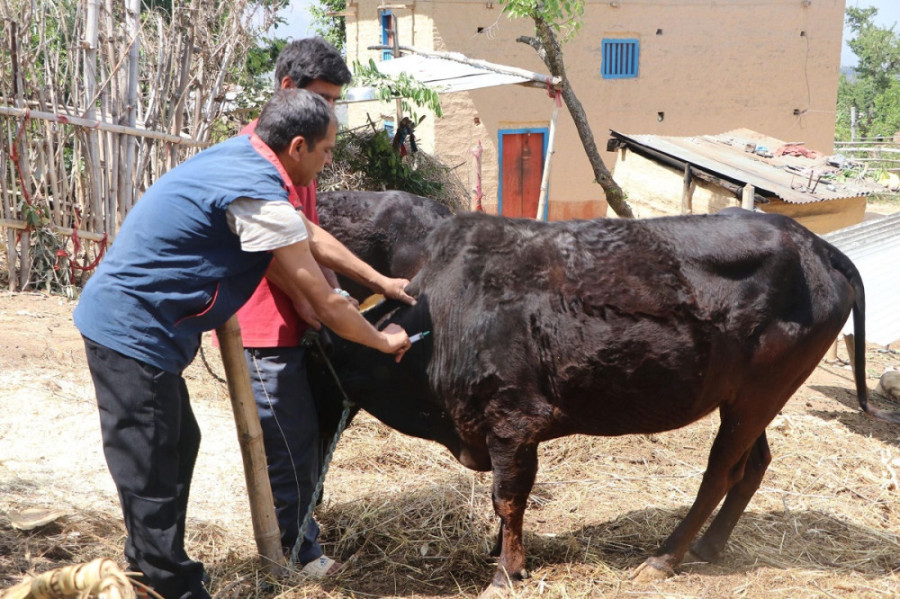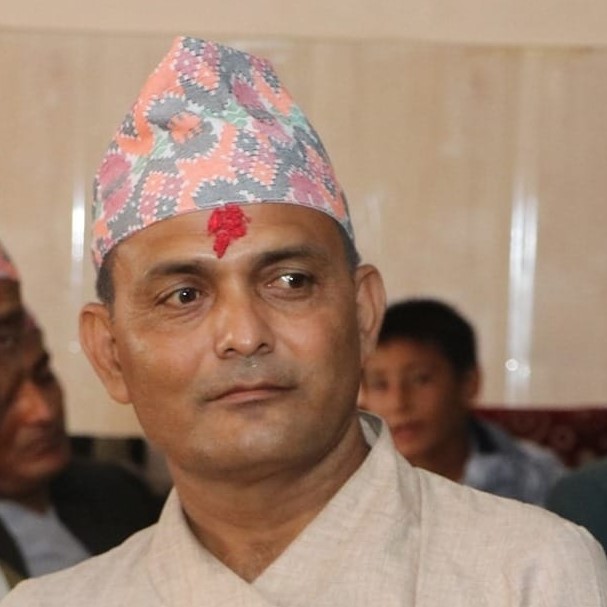Money
Farmers distressed as lumpy skin disease kills their cattle
Cows, buffalos and even yaks have been infected, and thousands have died, officials said.
Binod Bhandari, Kedar Shiwakoti & DB Budha
Kamala Ghimire of Maimajhuwa in Ilam purchased a cow for Rs100,000 recently. She used to give 15 litres of milk daily. Last week, both the cow and her calf died.
Ghimire has bought another cow so that she can feed milk to her grandson. “It will be difficult to save this one too,” she said.
A fellow villager Bir Kumar Rai sells milk and provides for his four-member family. All his cows have died.
A cattle disease known as lumpy skin disease has been rampaging across the country and caused great pain to farmers.
In Ilam, the disease has spread to all villages in Deumai, Suryodaya and Mai municipalities. Cattle in Sandakpur, Chula Chuli, Mangsebung, Phakphokthum, Rong and Maijogmai rural municipalities in the district too have been infected.
Nearly 30,500 head of cattle in the district have caught the transboundary disease. In Ilam, 1,251 head of cattle have died so far.
As per Binod Kumar Shah, information officer at the Directorate of Livestock and Fishery Development in Koshi province, 204,242 head of cattle in Koshi province have been infected. The disease has so far killed 4,391 animals.
“Around 95,000 head of cattle have been vaccinated,” said Shah.
The disease has also infected yaks in the mountains. In Dolakha, 37 yaks have caught the disease.
“Twelve yaks are seriously ill,” said farmer Nima Sherpa of Kalinchok. “This is the main season to produce ghee and dog chew from yak milk. But they have fallen ill during the peak milking time.”
Sherpa said there would be a shortage of milk this season due to the lumpy skin disease.
A yak costs around Rs70,000 to Rs100,000. “This is a great loss to us,” he said.
According to the Veterinary Hospital and Animal Services Expert Centre in Dolakha, 3,181 head of cattle in the district have been infected and 53 have died.
Experts say that the number of deaths is alarming and suspect that the government may have underreported the deaths.
The outbreak has resulted in massive income losses to farmers since it has not only killed their cattle but also caused a drop in milk production, emaciated animals and birth issues.
Ram Datta Devkota of Malabheeda in Jumla used to earn around Rs15,000 a month by selling buffalo milk. Devkota had bought the buffalo four months ago for Rs58,000.
He took the animal to the Department of Animal Services after it showed signs of being infected. On June 3, his buffalo died. A few days later, he lost his two oxen too.
Devkota had not insured his cattle. He estimates he lost Rs200,000.
Thousands of Nepali farmers across the country use cattle to plough their paddy fields, and the spread of the lumpy skin disease at the busiest time of the year has caused immense distress among them.
Experts have warned of a possible drop in the paddy harvest and dairy output which may trigger food insecurity this year. They say that the country is already grappling with high inflation, and a decrease in farm production could hurt people in the low-income bracket.
On Friday, Speaker Dev Raj Ghimire instructed the government to inform Parliament about the measures taken to control the disease.
Padam Giri, chief whip of the CPN-UML, told Parliament that the situation had become dire. “The government should take the issue seriously,” he said.
The ailment was first recorded in Zambia in 1929, and has extended through Africa, and more recently, to parts of Europe.
The first cases in South Asia were detected in 2019, and it has since spread to India, China and Nepal. In Nepal, the disease was first reported in Morang in June 2020.
Until two years ago, the disease had sickened 3,301 head of cattle and 13 of them had died in 16 districts.
The second wave of the disease started in March. Since then, according to the Department of Livestock Services, the disease has sickened 800,000 head of cattle, mostly cows and buffalos. Among them, 27,000 have died.
Nepali Congress lawmaker Ramhari Khatiwada told Parliament that the situation was worse in the mountains where farmers are dependent on oxen to till their land. “As oxen have died, fields in the mountains lie unplanted.”
Agriculture technicians say farmers in Karnali province have suffered great losses.
According to the provincial Ministry of Land Management, Agriculture and Cooperatives, 207,273 head of cattle in all 10 districts in the province have been infected. Among them, 7,632 have died.
Lok Bahadur Kathayat, a farmer of Lekbesi Municipality-7 in Surkhet, said that if the provincial government had provided vaccines on time, the losses would have been minimal.
As per the Department of Livestock Service, nearly 200,000 head of cattle have been vaccinated so far.
The government has allowed private importers to import the Neethling strains vaccine. So far 1.37 million doses have been imported.
“The low rate of vaccination is because we have to administer the vaccines to only healthy cattle, and it is difficult to determine whether the animals are infected or not,” said Dr Mukul Upadhyaya, a senior veterinary officer at the Department of Livestock Service, told the Post in a recent interview.
"If one cow in a herd is found to be infected, it is possible that others in the herd are infected too. We cannot administer the vaccine if herd immunity has developed in the cow. In such cases, the vaccine can be administered next year,” he said, adding that they had to look for areas where there is zero infection.
“That’s why the rate of vaccination is very low compared to the number of doses we possess.”
The livestock sector is one of the largest contributors to the economy, accounting for 13 percent of the country’s GDP. Among the 3.8 million farming households in the country, 95 percent own dairy animals, a government report has revealed.




 12.12°C Kathmandu
12.12°C Kathmandu














%20(1).jpg&w=300&height=200)
